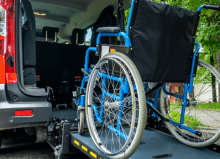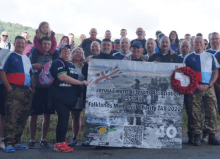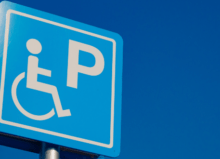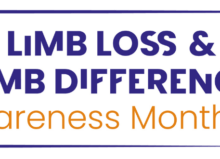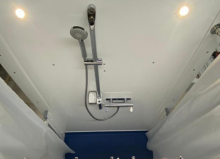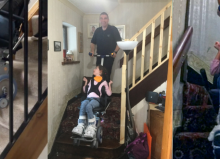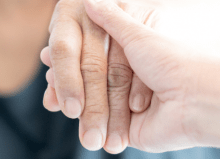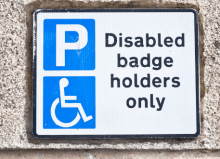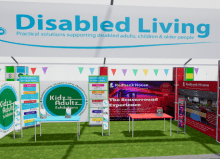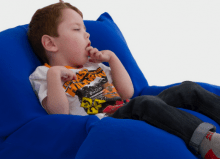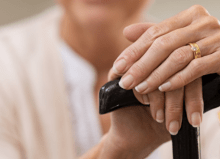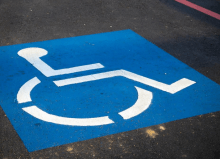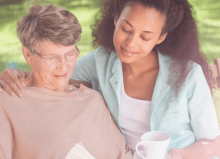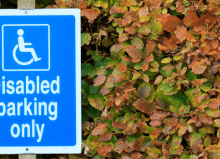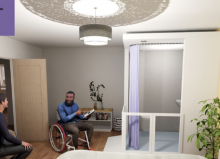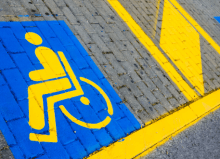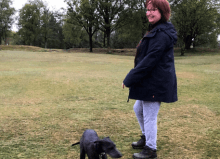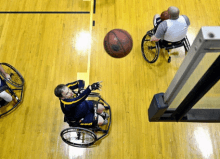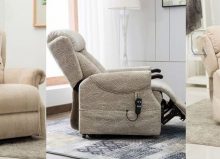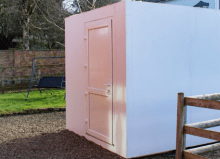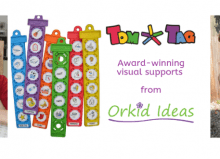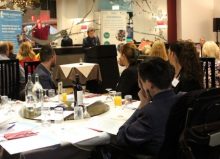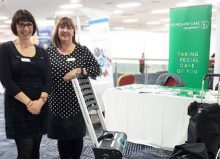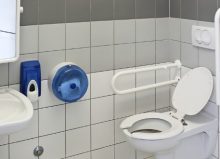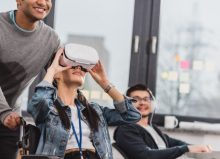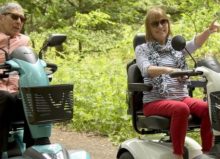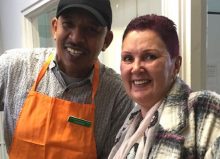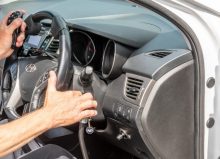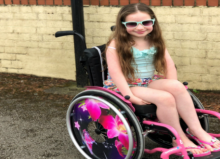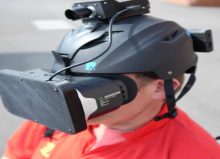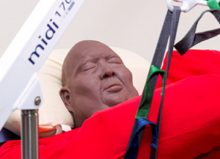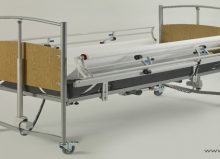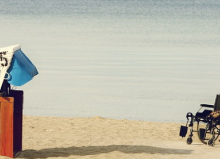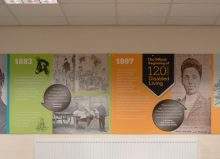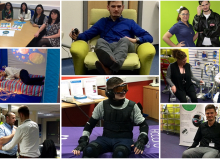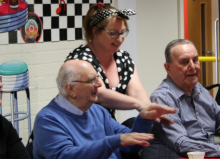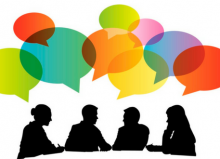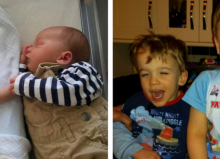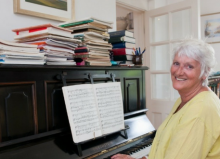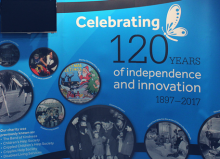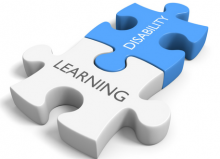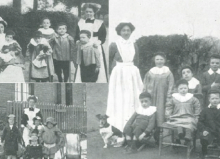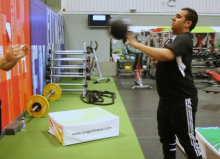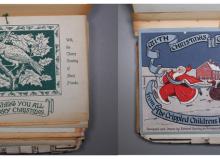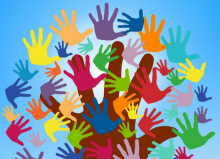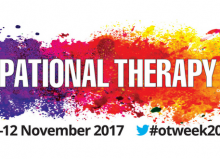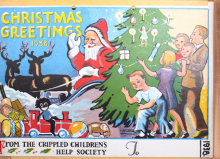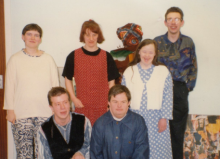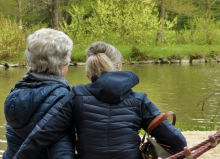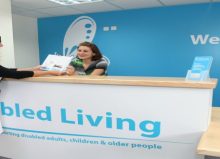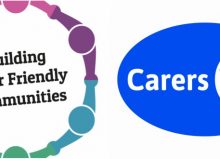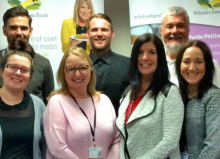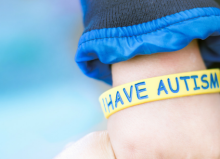Why Standardising Objects of Reference Can Render Them Meaningless
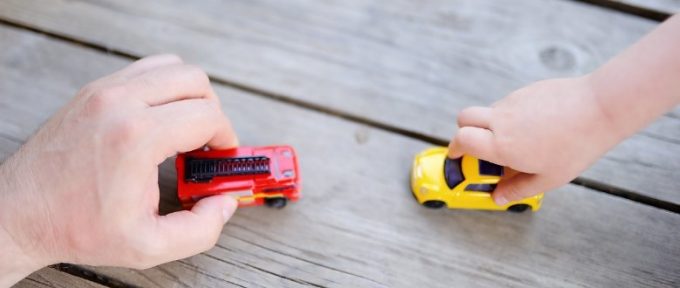
The phrase “Objects of Reference” refers to a communication support system whereby particular objects associated with particular activities are used to communicate to a person with complex disabilities that certain activities are about to take place. For example someone might be handed a continence pad before being taken to the toilet, or be given their swimming costume to hold before going swimming.
To use Objects of Reference with someone you need to first identify objects that are meaningful to them and then use those objects consistently as markers for the associated events. It is no use showing them a plastic toy bus to tell them that they are going on the bus, this is neither what a bus looks like to them or what it feels like, it might be more relevant to get them a section of seat belt, or wouldn’t it be marvellous to have the ‘ding’ of the bell that is rung to disembark!
I have seen Facebook posts from people asking for ideas for what to use for Objects of Reference
Asking what someone else, somewhere else uses to represent something else for someone else is meaningless, by their very nature Objects of Reference are personal to the individual. If you are stuck, ask them. Ask them by observing closely, with all your senses, what their experience of that event is. Which part of their experience could you capture in an object to share with them? Consider which experience is the biggest marker of that event to them, for example with the swimming pool it is true that they are likely to change their clothes, and feel a towel upon their skin, but this also happens to them at other times as well. It is likely that the scent of the water is the most distinctive factor for them – could you have a sample of pool water in a container for them to smell?
I have been to settings who proudly tell me they have a standardised set of Objects of Reference that everyone in their setting uses. Standardised systems are not individualised systems. Objects of Reference are intended to be highly personal not standard.
If you are standardising your use of Objects of Reference you are presuming the people who are using them will become symbolic communicators
Some people do use Objects of Reference as a stepping stone to other symbolic forms of communication, such as symbol communication, and some people do not. For the people who do not, Objects of Reference may be the only system of communication available to them so it is all the more important that we protect its individualised nature.
Consider the experience of the world for someone who has limited cognitive and sensory abilities. Most of life is a confusing soup of experience, things happen to them, their brain does not have the chance to fully process what is going on as it is going on, so by the time they have heard a sound they may already be far from the object that emitted that sound. Light might be processed swifter than touch, so you see a hand on your skin but do not feel the touch until several moments later, and do not associate that sight with that sensation. From time to time something in this confusion makes sense.
These times are the times that repeat often, times when the same thing happens in the same place and means the same thing

Times they have had so many chances to explore that they begin to hold a sensory memory. It is not that they have stored them in their memory as we would understand it, they cannot go back and “remember” being here before, it is more of an embodied memory, like the muscle memory formed riding a bike, their bodies recognise where they are.
If you collect one aspect of that known place and can share it with them when they are not there, you reach into that blur of experience and say “something is going to happen, something you know” it is like a rope thrown into the confused soup that connects them to a place of solid ground. Throwing a rope that someone else, somewhere else, uses with someone else, won’t have that connective communicative effect.
Ah but in time they will learn that the plastic bus means the real bus.
…well they might, especially if the plastic bus goes on the real bus with them and is not taken away, but why are we insisting they do more work to access communication, when if we did a little more work and found a relevant object they could access it already?
But it is such a faff to have different objects for different people, having a standardised set means we all know what to use.
…it is true that to meaningfully use Objects of Reference you will require a different set for each person, and this is inconvenient. But this was never about our convenience was it, it was about communication. We are able to organise a storage system and label it carefully so everyone knows whose objects are whose. We would go to the ends of the earth to reach into their confusion and share communication, so it really is not so much bother to ensure Objects of Reference are meaningful to each individual using them.
This post was written by Joanna Grace, a new contributor to Disabled Living’s blog. Sensory Engagement Specialist, trainer, author, TEDx speaker and founder of The Sensory Projects.


